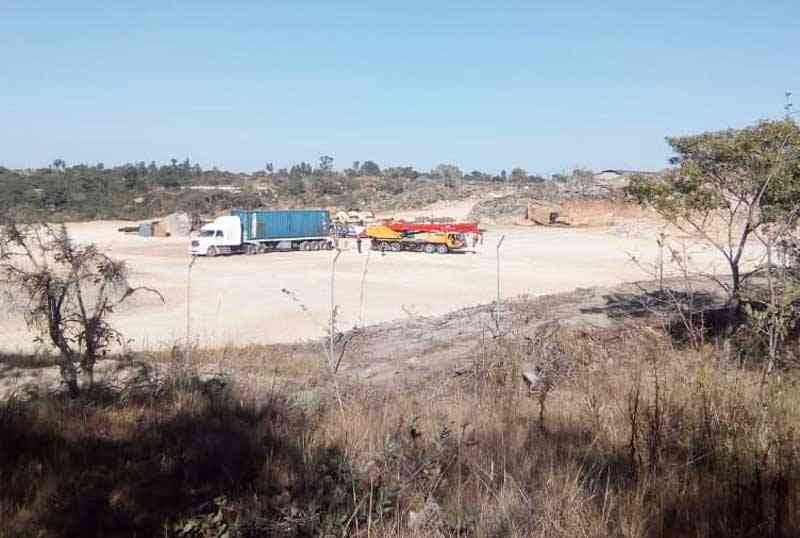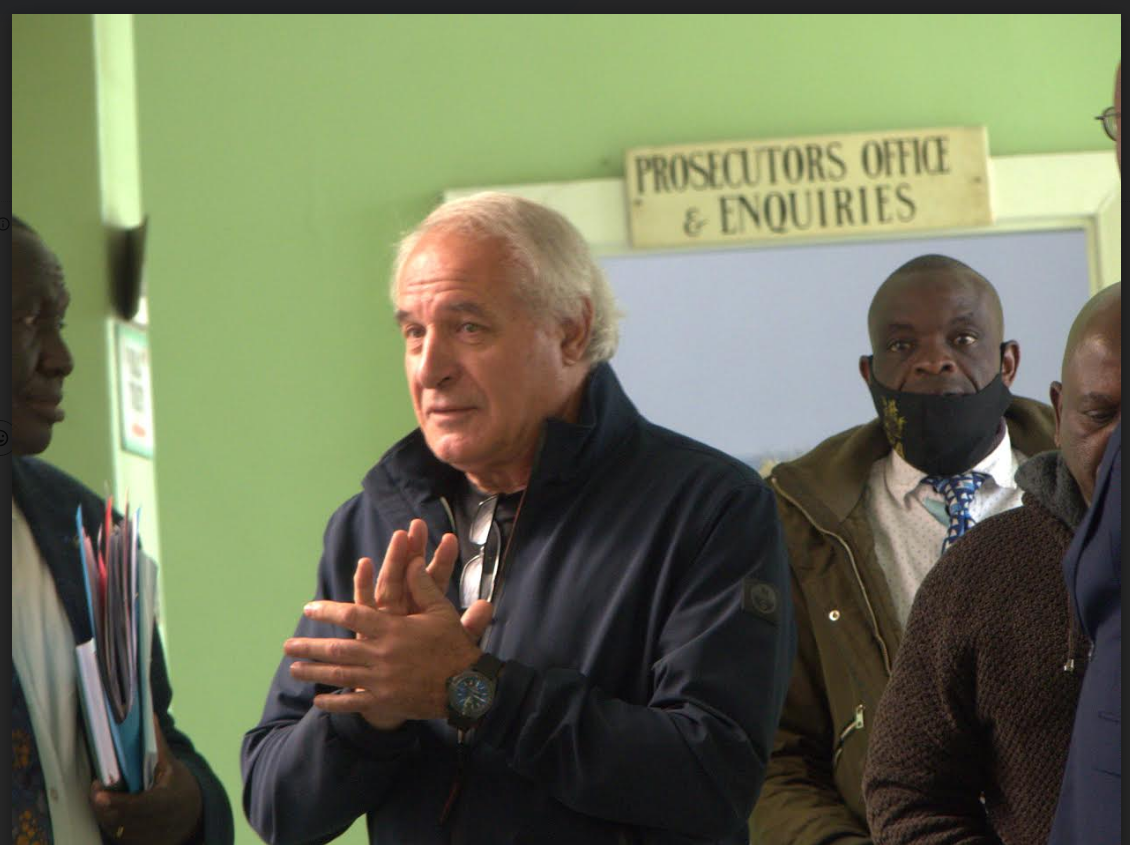
A plume of dust can be seen rising into the sky a distance from the Harare-Mutare highway in what used to be a thriving commercial farming area between Melfort and Ruwa in Mashonaland East province.
The area at the foot of the affluent Nora Valley in Goromonzi district is home to the Shengxiang Lithium Processing Plant, a Chinese-owned lithium operation that has brought disharmony in the neighbourhood.
It is owned by Shengxiang Investments Private Limited, which is among a string of foreign companies that have taken over lithium claims across the country in recent years.
According to records at the Registrar of Companies in Harare, directors at Shengxiang Investments are Chinese nationals Kaiwen Liao, Jiandong Liao, Kai Li, Shuping Lin and Zimbabwean Terrence Ncube, who is listed as the principal officer.
Foreign investors, mostly from China, have spent over US$1 billion since 2021 to acquire and develop lithium mines in Zimbabwe as they seek to satisfy the growing apetite of battery mineral producers from across the world.
Zimbabwe boasts of some of the world’s largest hard rock lithium resources while China dominates the global market for lithium.
For Goromonzi, a district east of the capital Harare, lithium has brought a mixture of hope for communities that are starved of economic opportunities and despair due to damage wrought by foreign investors that pay scant regard to local environmental regulations.
Investigations by The Standard in partnership with Information Development Trust, a non-profit organisation supporting investigative journalism in Zimbabwe and southern Africa, revealed that besides being at loggerheads with the locals over its project, Shengxiang had defied two government orders to shut down operations.
- Chamisa under fire over US$120K donation
- Mavhunga puts DeMbare into Chibuku quarterfinals
- Pension funds bet on Cabora Bassa oilfields
- Councils defy govt fire tender directive
Keep Reading
The firm has been so brazen in its disregard for local environment laws, it defied orders by the Environmental Managment Agency (EMA) to stop operations until an Environmental Impact Assessment (EIA), which is a prerequisite for all mining projects was carried out at its site.
In January this year, EMA fined Shengxiang $100 000 after the company was found operating without an EIA during a blitz against illegal mining operations in Goromonzi.
The company was ordered to shut down operations until it obtained an EIA, but barely a month later it was caught by EMA violating the same regulations.
An EIA is an assessment of the possible impacts that a proposed project may have on the environment, which consists of the environmental, social and economic aspects.
The Environmental Management Act of 2002 and Statutory Instrument 7 of 2007 (Environmental Impact Assessment and Ecosystems Protection) compels prescribed projects listed under the first schedule of the EMA Act (Cap 20:27) to undergo an EIA process prior to implementation.
Shengxiang’s plant does mineral ore processing and the company is also converting forest land to other use.
Such activities are listed under the first schedule of the EMA Act and require the conclusion of the EIA process before implementation of a project.
Astas Mabwe, the EMA Mashonaland East spokesperson, confirmed that Shengxiang has been fined twice for violating EIA regulations, but continued to operate without getting the green light from the authority.
“When the company started to buy lithium, outsourcing lithium to the plant which is located near Mtangadura (Truck Stop), I’m the one who came, gave an order and a ticket to stop operations,” Mabwe said.
“Shengxiang was operating without an EIA.
“So, in the last week of January we ordered them to close and we fined them $100 000.
“In the last week of February when they started to build the plant you’re referring to, our EMA officers came on the ground, inspected, ticketed them and gave an order to stop operations until they acquire an EIA.
“They were ticketed for not complying with the first order to stop operations and this time they were fined US$1 000.”
A visit to the Shengxiang plant by this publication showed that it was business as usual despite an admission by some company officials that they were yet to obtain an EIA.
Workers could be seen blasting rocks using heavy machinery such as front loaders and jack-hammers.
An insider said in June the company employed 10 more workers to add to its workforce of 60.
The site is heavily guarded by armed security personnel, who discourage employees and visitors from using their phones to take pictures or videos inside the plant.
It emerged during investigations that Shengxiang engaged a local environment consultancy firm Enviro Remedy Company (Envirem) to carry out the EIA process after it ran into problems with EMA, but the local community says the exercise is heavily flawed.
Edwin Mhowa, who owns a plot in the area said Shengxiang deliberately left out key stakeholders in their EIA consultation process.
“Most plot holders in the Cheltenham area were not consulted except for the few white landowners whom I hear actually pushed for the consultation process to involve them through EMA,” Mhowa said.
“Instead of consulting us as landowners who have a lot to lose having invested fortunes in buying these plots, you find that the company was deliberate in consulting those people who are called for meetings with promises of future employment, all of whom can just leave if this turns out to be a bad project.”
Mhowa said he only got to attend a consultative meeting through sheer luck.
“I only got to hear of one such consultative meeting just an hour before it was held from people who had been invited,” he said.
“I got to the plant where the meeting was to take place only to be made to wait for over an hour with the conveners of the meeting not present”.
Mhowa said they feared air, water and noise pollution from the Shengxiang plant if it was allowed to continue operations.
Some of the submissions by the community included fears that emission of harmful gasses would have long term health effects on the local population, increased extraction of ground water, which will lower the water table and contamination of Nyaguwe River, which feeds into Nora River.
Shengxiang’s plant is on the banks of Nyaguwe River.
Harare’s touted next reliable source of water is the Kunzvi Dam that would soon be constructed on Nora River
“(The project will have) excessive consumption of underground water, contamination of underground water, contamination of Nora River and noise in a residential area,” submitted Stuart Van De Ruit from Cheltenham in a submission in our possession.
Hega Mutsingo a war veteran, who has lived in the area since the 1980s, said there was nothing that could stop the project because the Chinese appeared to be getting protection from the authorities.
“The land where the construction is taking place used to be owned by a Mr McDonald, who made my husband his business partner before he died,” Mutsingo said.
“We had to sell that land to Mtangadura through our lawyers to cover legal debts, and Mtangadura then sold the land to the Chinese,” she said.
“I don’t think there is anything that can stop that plant; these are investors who came to Zimbabwe and are operating with the blessing of President Mnangagwa so there is no stopping the development.
“I don’t think the president would allow investments that are harmful to the people to go on, after all, he needs us the people to keep him in power.”
Mutsingo whose plot is next to the plant said she was happy that Shengxiang bought a piece of her land, which they are using as an access road.
“After a bit of a tussle and misunderstanding we agreed to sell them a piece of land to use as a road. I’m happy that they did not use any force or unorthodox ways,” she said.
Mutsingo’s daughter Hazvinei, who is a Zanu PF youth leader in Goromonzi South’s Ward 25, alleged that some party heavy weights were banking on the success of the project so that they could showcase it during election campaigns.
“The plant will be visited by the president, and when the time comes he will officially open it,” she said.
“There are 173 boxes of Zanu PF regalia stored at the plant that will be worn on the day”.
Some of the small holder farmers who have lived in the area for between 30 to 60 years have since engaged Zimbabwe Lawyers for Human Rights (ZLHR) to stop Shengxiang’s operations.
On June 1, 2023, Mashonaland East provincial mining director Tendai Kashiri wrote back to ZLHR, indicating that Shengxiang was entitled to the land since it bought it last year.
The letter indicates that the mine — which is set to displace at least six households even though the victims could increase when it becomes fully operational — still does not have a mining licence, but just a restricted blasting one under the Mines ministry head office reference number 006442.
The correspondence to ZLHR was signed by Kashiri, who noted that the purchase of the land in question was done in accordance with Statutory Instrument 57 of 2023.
The SI amended the Base Minerals Export Control Act to allow for prospecting for and processing of base minerals that include lithium.
Residents, however, contend that they were never consulted when the land was sold, neither did the company engage the local authority as the Mines and Minerals Act requires.
They complained that the takeover of the 20 hectare land was “shrouded in mystery”, hence the decision to engage ZLHR.
The consultancy firm Envirem insisted that Shengxiang had taken into account all the issues that were raised by the community concerns to come up with an environmentally friendly plant.
“The company will use a blind slump closed water system so that liquid waste is recycled, nothing leaves the plant,” said Envirem’s associate consultant Zivai Vilika.
“Adequate measures will be put in place so that there is no possibility of chemical leaks as there will be secondary containment.
“As for the concern that we will use up ground water, the system Shengxiang plans to use does not include water, but only chemicals, which is desulphurated gypsum not sulphuric acid as suggested by some stakeholders”.
Vilika said Shengxiang will put mufflers in place to reduce noise from the plant while gas emissions will be ejected hundreds of metres above ground.
“The toxicity of gas emissions will be significantly reduced during the process so that when it finally falls back to the ground it will be clean and consumable,” he said.
“The plant will be manufacturing lithium carbonate, a key raw material in making batteries.
“The rock waste, which will be left after extracting lithium from the ore will be used to make bricks so that nothing goes to waste.
“EMA will also constantly check if the company is adhering to set standards and promised practices.
Environmental consultant Elijah Mwidziwendira said Shengxiang will employ the bulk of less skilled workers from the Goromonzi community.
“The company will employ between 200 to 300 less skilled workers, who will be drawn from Goromonzi area,” Mwidziwendira said.
“Currently the company has 60 employees who are already on the job earning a competitive salary, higher than what most companies are paying.”
He was responding to complaints by the community that the company recruited most of its workers from Caledonia and Epworth at the expense of locals.
Meanwhile, Shengxiang principal Ncube claimed that the company was a victim of racism as it was only white members of the white community, who were against the project.
“The black community has no problem at all with us after all we are doing business in our private land,” Ncube said.
“The only community against the project it’s the white community and their reason being racial profiling.
“Our company is private owned and we have created employment that white community has not even matched the number from the time they have been in Goromonzi.”
He denied accusations that Shengxiang was using political links to defy local laws.
“Don’t politicise business by saying we are linked to Zanu PF or not,” Ncube charged.
“As a local person and a Zimbabwean I have rights to be linked to who or whichever organisation.”
He claimed that the company had an EIA despite admissions by its consultants the certificate was yet to be granted.
Last year, the Chinese Chamber of Business Enterprises in Zimbabwe (CCBEZ), which represents the majority of Chinese investors in Zimbabwe, urged the government to improve enforcement of its own regulations to avoid non-compliance by foreign companies.
CCBEZ’s interventions followed protests by local non-governmental organisations that some Chinese firms were violating labour and environmental regulations with impunity.










